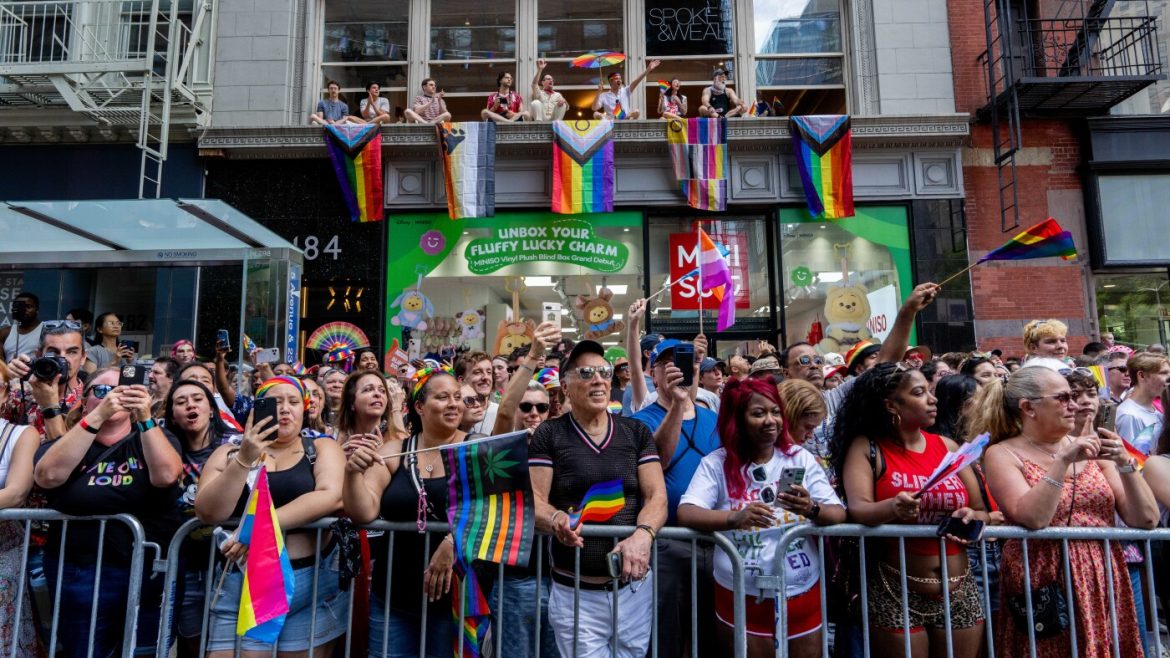The culmination of Pride Month in 2025 was a vibrant tapestry of celebration and activism, reflecting the enduring spirit of the LGBTQ+ community. Major cities like New York and San Francisco emerged as focal points for both jubilant expressions of identity and fervent calls for justice. The events underscored the dual nature of Pride—joyous festivities intertwined with political resistance, a tradition rooted in the legacy of the Stonewall Riots.
A Legacy of Resistance and Celebration
Pride Month, observed annually in June, has long been a time for the LGBTQ+ community to celebrate their identities while advocating for equality and justice. The 2025 celebrations were no exception, blending exuberant parades with pointed protests. In New York City, the theme “Rise Up: Pride in Protest” anchored the Pride march, paying homage to the Stonewall Riots of 1969. Over 700 groups participated in the march, which wound its way along Fifth Avenue, passing the historic Stonewall Inn. The event drew an estimated 2.5 million spectators and marchers, a testament to the growing visibility and solidarity of the LGBTQ+ community.
San Francisco, another epicenter of Pride celebrations, hosted one of the world’s largest Pride events. The parade along Market Street culminated at the Civic Center Plaza, where concert stages and political rallies merged. The Bay Area’s event was a microcosm of the broader Pride movement—colorful and festive, yet deeply rooted in political advocacy.
Transgender Rights at the Forefront
A defining feature of the 2025 Pride Month finales was the heightened focus on transgender rights, particularly in response to policies enacted during the Trump administration. These policies, which included restrictions on transgender healthcare, military service bans, and limitations on legal protections, sparked widespread outrage and activism. In New York and other cities, marchers carried signs and chanted slogans demanding dignity, inclusion, and an end to systemic discrimination.
The protests were not merely symbolic; they were a call to action, emphasizing that Pride is as much about political resistance as it is about celebration. The LGBTQ+ community and its allies used the platform of Pride to amplify their voices, demanding systemic change and greater protections for transgender individuals.
Global Solidarity and Activism
The spirit of Pride extended far beyond the United States. Cities around the world, from Budapest to Sydney, held parades and demonstrations, underscoring the universal fight for LGBTQ+ rights. In Budapest, for instance, Pride events were held amidst a backdrop of political tension, highlighting the ongoing struggle for acceptance and equality in Eastern Europe.
WorldPride 2025 in Washington, D.C., concluded with a large rally and march on the National Mall. Over 1,000 people gathered to address what organizers described as a “coordinated and systemic attack” on human rights. The event blended cultural performances, such as drag shows, with sustained activism, demonstrating the power of Pride as a platform for both celebration and resistance.
The Historical and Cultural Significance of Pride
The modern iteration of Pride is deeply rooted in history, tracing its origins to the first Pride March in 1970, which marked the anniversary of the Stonewall Riots. That initial march was an act of defiance and visibility, a bold statement against widespread discrimination and criminalization of homosexuality. In 2025, Pride events continued this tradition, signaling that protest remains essential.
The events of 2025 were a reminder that Pride is not just a celebration but a movement. Amid the streams of multicolored flags and exuberant music, the message was clear: Pride is a stage for demanding systemic change. The legacy of Stonewall lives on, ensuring that Pride remains a dynamic and potent force for inclusion, dignity, and human rights.
The Impact and Future of Pride
The end-of-Pride-Month events in 2025 demonstrated the evolving strategies of the LGBTQ+ community—celebration and protest intertwined—to advance rights and social acceptance. By marking their presence in historically and politically charged spaces, marchers and advocates kept conversations about equality and justice at the forefront of public discourse.
As the political landscape shifts, particularly around transgender rights, Pride events will continue to play a crucial role in mobilizing supporters, educating allies, and pressuring policymakers. The spectacle of joy and resistance combined sends a powerful reminder: Pride is as much about honoring past struggles and victories as it is about facing contemporary challenges head-on.
Conclusion: Pride as an Enduring Movement
The 2025 Pride Month culmination captured the complex identity of this annual observance—a dance of celebration and confrontation, rejoice and resist. In cities like New York and San Francisco, millions joined together not only to honor LGBTQ+ culture and achievements but also to renew their commitment to challenging injustice. The legacy of Stonewall lives on through “Rise Up: Pride in Protest,” ensuring that Pride remains a dynamic, potent force for inclusion, dignity, and human rights worldwide. As the movement continues to evolve, Pride will undoubtedly remain a beacon of hope and resistance, a testament to the enduring spirit of the LGBTQ+ community.


